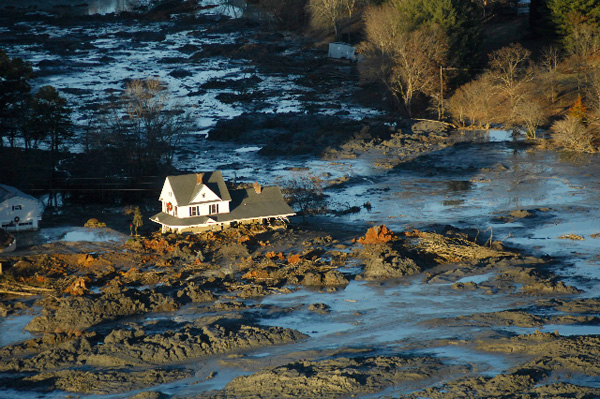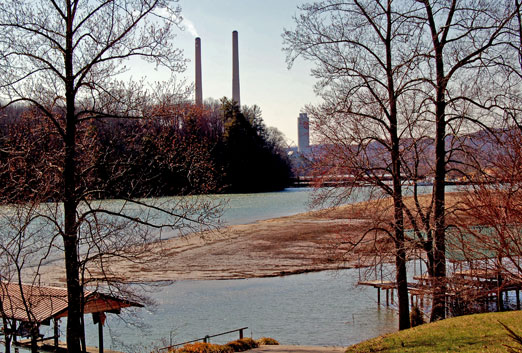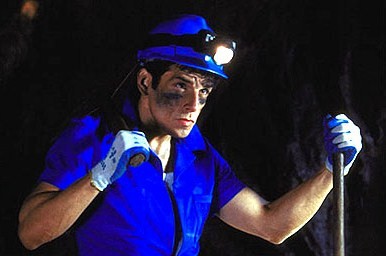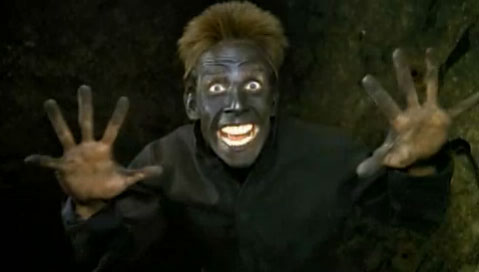Tell them that the testimony being given is based upon false premises and they should not vote for HR 2273 when the Committee hearing resumes at 3 pm EST.
According to the National Academy of Science (NAS) Coal Combustion Residues or waste (CCR’s) contain numerous hazardous metals and substances with hazardous characteristics including arsenic, lead, selenium, mercury, chlorides and sulfates. (The National Research Council (NRC), Managing Coal Combustion Residues in Mines, March 2006, pp. 27-57)
A recent report cites hexavalent chromium as another toxic by-product of CCR’s
These pollutants can cause cancer, birth defects, reproductive problems, damage to the nervous system and kidneys, and learning disabilities in children. Similar to lye, CCR’s can be caustic enough to burn the skin on contact. CCR’s can decimate fish, bird and amphibian populations by causing developmental problems such as tadpoles born without teeth, or fish with severe spinal deformities. CCR’s have been associated with the deaths of livestock and wildlife.
According to the U.S. Environmental Protection Agency (EPA), a waste is “hazardous” if it leaches toxic chemicals, like arsenic or selenium, above a certain threshold when tested using the Toxicity Characteristic Leaching Procedure (TCLP).
Using the TCLP, coal ash rarely exceeds this threshold. The EPA’s Science Advisory Board and the National Academy of Sciences have determined that the TCLP does not accurately predict the toxicity of coal ash.
National Research Council, Managing Coal Combustion Residues in Mines, 2006, pages 150-152. Also see U.S. EPA Science Advisory Board, Waste Leachability: The Need for Review of Current Agency Procedures, EPA-SAB-EEC-COM-99-002, Washington, DC, 1999, and Leachability Phenomena: Recommendations and Rationale for Analysis of Contaminant Release by the Environmental Engineering Committee, EPA-SAB-EEC-92-003, Washington, DC, 1991.
When EPA tests coal ash using the new, more accurate Leaching Environment Assessment Framework (LEAF), the resulting leachate can exceed by many times these hazardous waste thresholds. For example, when tested with EPA’s new, more accurate test, coal ash leached arsenic at 1,800 times the federal drinking water standard and over 3 times the hazardous waste threshold. The new test revealed selenium leached from one coal ash 580 times the drinking water standard and 29 times the hazardous waste threshold.
U.S. EPA, Characterization of Coal Combustion Residues from Electric Utilities – Leaching and Characterization Data. EPA-600/R-09/151, Dec. 2009, http://www.epa.gov/nrmrl/pubs/600r09151/600r09151.html, pages xii, xiv, 133, 135, 138 and 143.
U.S. EPA, Characterization of Coal Combustion Residues from Electric Utilities – Leaching and Characterization Data. EPA-600/R-09/151, Dec, 2009, http://www.epa.gov/nrmrl/pubs/600r09151/600r09151.html, page xiv, Table ES-2.
EPA’s 2010 risk assessment found the cancer risk from drinking water contaminated with arsenic from coal ash disposed in unlined ponds is as high as 1 in 50 adults, which is 2,000 times EPA’s regulatory goal for acceptable cancer risk.
U.S. EPA, Human and Ecological Risk Assessment of Coal Combustion Wastes, RIN 2050-AE81 April 2010, page 4-7.
In hearings today, members are providing information that minimizes the harm by coal ash waste. Rep Green is holding that Coal Ash is only an impoundment issue, and Rep. McKinley has testified that all tests show Coal ash is not toxic using a chart that uses ONLY TCLP tests results when the National Academy of Science has twice determined that the TCLP is NOT accurate. Further, Rep. McKinley has testified that EPA has twice “conclude” that coal ash is not toxic when the EPA stated that if new evidence is presented that shows evidence of damage that it will revisit the determination.
Can you call your legislators and explain that the testimony being given is based upon false premises.
US House Energy and Commerce Committee
| Republican Members, 112th CongressCliff Stearns (FL) 202-225-5744
Fred Upton (MI) 202-225-3761 |
Democrat Members, 112th CongressHenry A. Waxman (CA) 202-225-3976 John D. Dingell (MI) 202-225-4071 Edward J. Markey (MA) 202-225-2836 Edolphus Towns (NY) 202-225-5936 Frank Pallone, Jr. (NJ) 202-225-4671 Bobby L. Rush (IL) 202-225-4372 Anna G. Eshoo (CA) 202-225-8104 Eliot L. Engel (NY) 202-225-2464 Gene Green (TX) 202-225-1688 Diana DeGette (CO) 202-225-4431 Lois Capps (CA) 202-225-3601 Michael F. Doyle (PA) 202-225-2135 Jan Schakowsky (IL) 202-225-2111 Charles A. Gonzalez (TX) 202-225-3236 Jay Inslee (WA) 202-225-6311 Tammy Baldwin (WI) 202-225-2906 Mike Ross (AR) 202-225-3772 Jim Matheson (UT) 202-225-3011 G. K. Butterfield (NC) 202-225-3101 John Barrow (GA) 202-225-2823 Doris O. Matsui (CA) 202-225-7163 Kathy Castor (FL) 202-225-3376 Donna Christensen (VI) |
 The Senate is about to hear legislation pertaining to coal ash waste regulation. There is an amendment proposed to slash EPA’s funding so that they cannot enforce safeguards at coal ash waste landfills. The following is a message from our friends with Environmental Integrity Project. Please take a few moments to contact your senator and let them know you want enforcement of regulations on these very hazardous and dangerous waste sites.
The Senate is about to hear legislation pertaining to coal ash waste regulation. There is an amendment proposed to slash EPA’s funding so that they cannot enforce safeguards at coal ash waste landfills. The following is a message from our friends with Environmental Integrity Project. Please take a few moments to contact your senator and let them know you want enforcement of regulations on these very hazardous and dangerous waste sites. In Winter of 2008 a coal ash slurry pond in Tennessee broke its damn, contaminating miles of downstream waterways and people’s homes with deadly carcinogens and other toxic substances. At the time it was called the
In Winter of 2008 a coal ash slurry pond in Tennessee broke its damn, contaminating miles of downstream waterways and people’s homes with deadly carcinogens and other toxic substances. At the time it was called the 
 TODAY is our National Coal Ash Day of Action – please ask the White House to allow the US EPA to finally regulate coal ash as the hazardous waste it is. Currently, coal ash is less regulated than household trash! This toxic waste stream has never been regulated and that must change, now.
TODAY is our National Coal Ash Day of Action – please ask the White House to allow the US EPA to finally regulate coal ash as the hazardous waste it is. Currently, coal ash is less regulated than household trash! This toxic waste stream has never been regulated and that must change, now. It is extremely important that Texans call in because
It is extremely important that Texans call in because 





